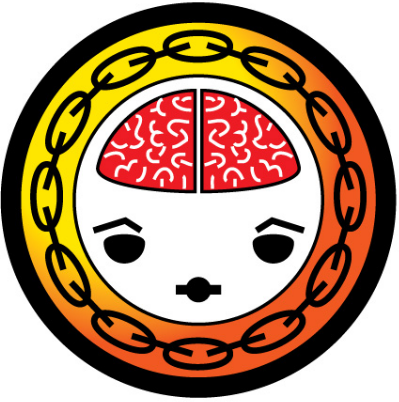I started Supply Chain Insights as an open research company in 2012. I write for the business leader and innovators seeking first-mover advantage.
The level of supply chain disruption that occurred during the past thirteen years of running my company defied my imagination. Today, we are attempting to navigate the repercussions of the pandemic, the changing fundamentals of the global supply chain, and how to capitalize on the promising advances in technology.
Navigating Shifts in Supply Chain Fundamentals
Over this period, processes evolved in a time of relatively cheap capital, raw material abundance, and low levels of global warfare. The last decade marked a second generation of global supply chain evolution based on the assumption that government policy would be rational, transportation would always be available, and demand and supply variability would be low. In the past five years, these assumptions fundamentally changed. For the many companies that chased lower labor costs broadening sourcing and introducing risk, companies are attempting to right the ship.
There are many opportunities for new forms of technologies to help, but the potential is limited by professionals stuck in traditional paradigms. Rampant M&A, and employee turnover, has reduced aggregate supply chain acumen.
Learning From Leaders
As I drink my coffee, I question, “How do we evolve to take advantage of new opportunities and ride the waves of supply chain risk? And, unveil new opportunities?” My caution to supply chain leaders on this crisp fall morning is that no one knows the answers to what will happen next. Most of the “air” on social media is tied-up in diatribes of technologists pushing technology or consulting approaches. Each claims to have an answer. I laugh at those who pretend they do.
My advice? When you go to conferences and listen to podcasts where speakers share opinions and pretend that they have the answers, sidestep the main narrative and listen to the questions. Use your mind to recognize the patterns to sensitize you to the unknowns that you want to know.
Let me use my podcast series of “What Would I Have Told My Twenty-Five-Year-Old Self” as an example. This week, I finished two more qualitative interviews, which will be published this week. I have now finished twelve interviews with a goal of finishing twenty-five. My goal is to help supply chain leaders learn from leaders at all stages of their careers. When completed, I will upload the interviews to my large language model (LLM) to help people query how to build a successful career.
In the process, consider that you are a listener to a qualitative research project. In the process, I ask each participant the same questions, but I get very different answers. Then I look for patterns. For example, here are my insights so far in the project:
- Networking is Invaluable. Don’t limit your definition of networking to the game of golf, dinner with colleagues, a conference reception, or the conversations at the watercooler. Hone the skill and make time to actively network. Listen more than speak, and ask open questions. Seek activities that enable networking with diverse ages, backgrounds, and identities. (A good prompt is to listen to Matt Spooner’s podcast. Matt had never had to look for a job, but found it more difficult than he had imagined. In his months of looking, he refined his networking skills.) Actively seek people with differing points of view. When you do, the advice from Vineet Khanna, prior leader of the Nestlé supply chain team, is golden. As an Indian native, leading global supply chain teams, when he discovered a differing point of view, he used his ability to first seek an understanding before casting judgment. It is easy to judge, and more difficult to listen for understanding.
- Communication Skills Don’t Just Happen. Keith Harrison, leader of the P&G supply chain team for thirty years, attributes his time in marketing to helping him develop simple yet effective messaging for his leadership campaigns, which emboldened his teams to take action. He stresses his work on improving his written communication skills as a key to his effectiveness. Hannah Kain, Founder of Alom, in an interview to be released this week, shares that her time working in politics and helping non-profits helped her to drive clarity, vision, and build the right behaviors in teams.
- Diversity Matters. Diversity of experiences, diversity of team experiences, and the ability to listen to diversity of opinions are all important skills. Annette Clayton established the need to immerse yourself with diverse teams at the start of our interview. Annette has a wealth of experience from the auto industry, Dell, and Schneider Electric. In my interview this week, with Brad Blizzard, previously Executive Director of Bridgestone International, he speaks on the need to be open to taking new jobs–often lateral movements–to build skillsets. This reminded me of my interview with Ben Massie, Lenovo, when he told the story of how his first job in finance taught him how to build skills to use data more effectively.
- Role of Technology/Consulting Partners. Note in the interviews, there is a conspicuous absence of any mention of any technology or consulting partners.
See the patterns?
As you move forward in this rapidly evolving time of supply chain reinvention, train yourself in pattern recognition. When someone asks an inciteful question, seek them out and ask, “Why?” Start a discussion to find out the root of the question. Engage in different conversations with leaders of differing points of view.
Reflection
I spoke at a conference recently, and was asked, “Supply chain leaders accomplished miraculous things over the last five years–recovery from the pandemic, rapid introduction of new vaccines, and evolving technology for warfare–why are there not more stories of the supply chain heroes?” I smiled as I thought of the answer and replied, “Supply chain is a team sport where winning teams solve problems. Energy for the team comes in finding solutions. They don’t stand around asking for accolades; instead, they are off to solve new problems. Hero status is not the goal.”
Yes, there are many unsung heroes, but I firmly believe that the positive energy from solving supply chain problems drives teams. In the process, I believe effective pattern recognition skills and active listening are the core of what drives success. These skills are the “cape” of the unsung hero.

What do you think? I would love to hear your thoughts.
Not To Late to Join the Outside-in Planning Course
No one has all the answers, but it is great to see change. If you want to ideate on these concepts, consider joining my outside-in planning class in October. (For an overview, listen to this podcast to understand the value from past participants.)
This will give you the opportunity to network with like minds on this transition in a safe learning environment. We explore how to use the Art of the Possible of new forms of technology to improve supply chain flows outside-in.
To join, just drop me a direct message on LinkedIn.







